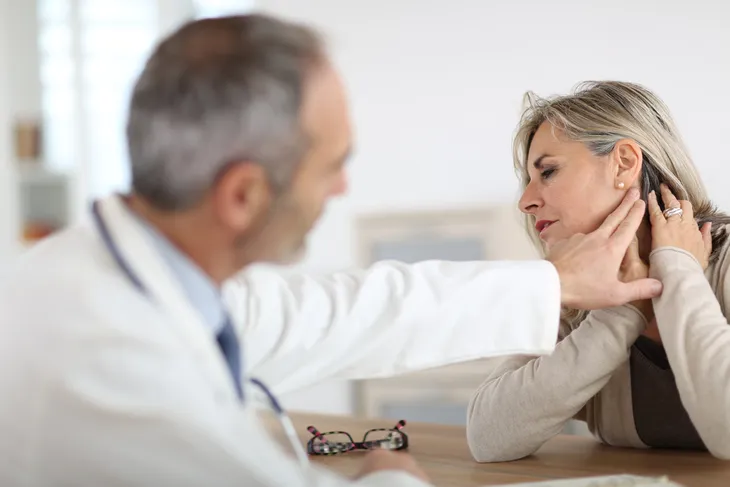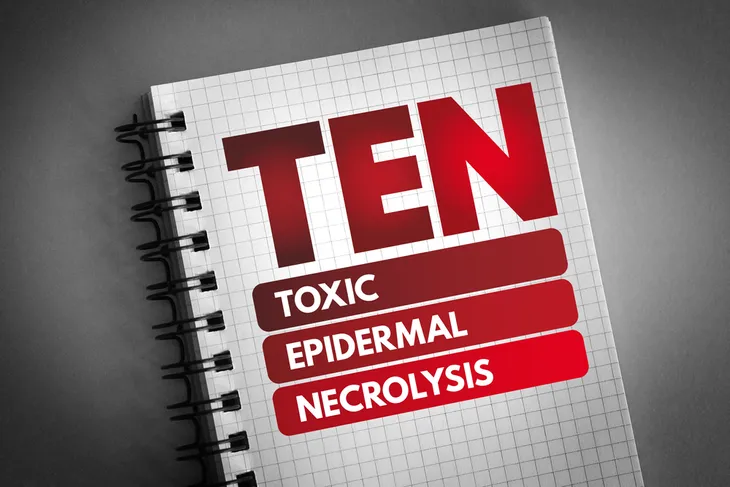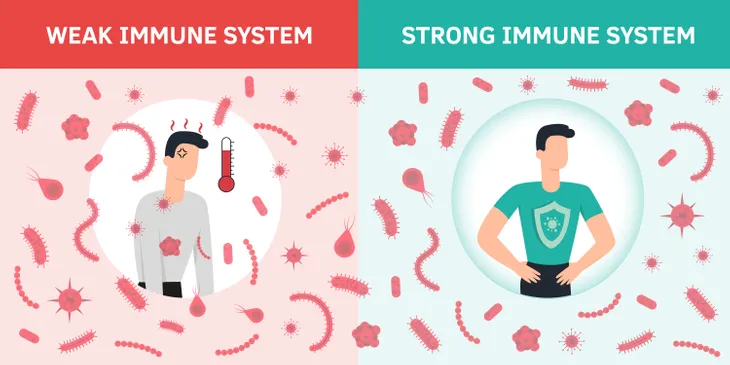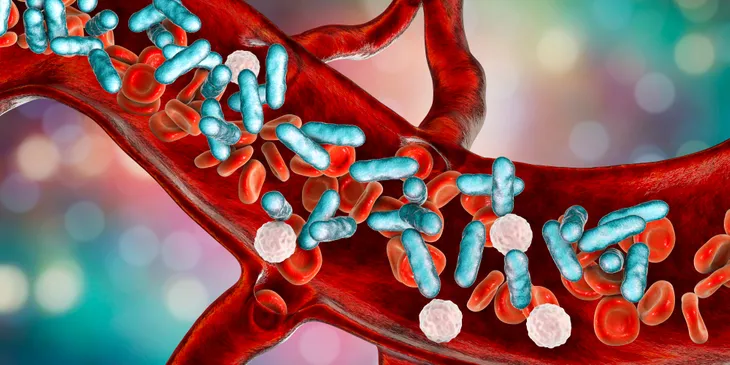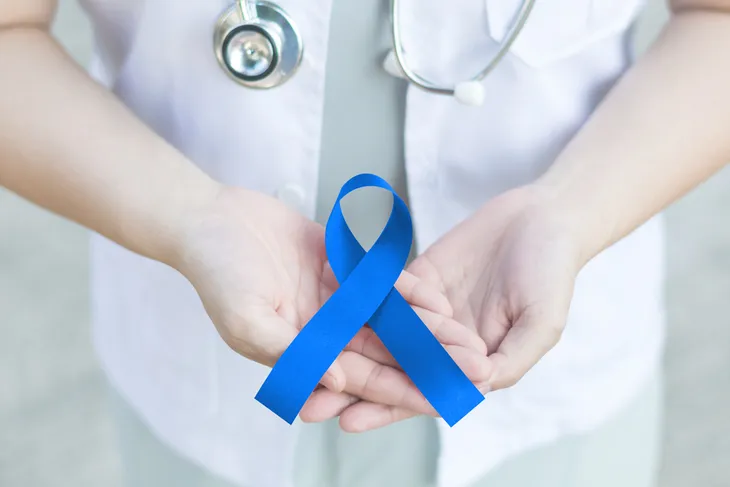Stevens-Johnson syndrome (SJS) is a rare but very serious disorder that affects your skin and mucous membranes. The disorder causes some painful, and unsightly symptoms like a rash and blisters. Experts most often associate it with getting certain infections and by taking certain medications.
If you suspect you have SJS, it’s vital that you seek medical help right away as it can be life-threatening. Recovery can take weeks, sometimes months but getting treatment as soon as possible will help protect your skin and organs and help prevent lasting damage. To help you recognize the signs of Stevens-Johnson syndrome, here’s everything you should know including the common symptoms, causes, and treatment options.
Common Symptoms of Stevens-Johnson Syndrome
WebMD explains, Stevens-Johnson syndrome typically starts with a fever. You may also feel like you have the flu. As it progresses telltale signs of the disorder will develop.
The common sign is painful red (or purple) skin that looks like it’s been burned. You may also have body aches, a cough, peeling skin, and painful urination. Drooling is also common if you develop sores inside the mouth and your eyes can seal shut due to swelling.
Advanced Symptoms
As Stevens-Johnson syndrome progresses even further, you can develop advanced symptoms. One advanced sign is unexplained widespread skin pain.
You’ll also likely develop blisters on your skin and mucous membranes. This includes many areas like the mouth, nose, and eyes. After a few days, you may even experience shedding of the skin as a result of the blisters.
What You Need to Know About Toxic Epidermal Necrolysis
Steven-Johnsons syndrome and toxic epidermal necrolysis (TEN) were once believed to be separate conditions, however, they are now considered variants of the same condition. The U.S. National Library of Medicine says, “Stevens-Johnson syndrome represents the less severe end of the disease spectrum, and toxic epidermal necrolysis represents the more severe end.”
If you have toxic epidermal necrolysis, it means more than 30-percent of the skin surface has extensive damage. Individuals with TEN will experience very painful symptoms and will feel very ill. In some cases, their hair and nails fall out.
When to See a Doctor
As mentioned earlier, Stevens-Johnson syndrome can be a life-threatening condition. This is why it’s imperative that you seek immediate medical attention as soon as you develop any symptoms of this condition.
Stevens-Johnson syndrome requires medical emergency attention in the hospital. Patients are often taken care of in the intensive care unit or burns unit.
Diagnosing Stevens-Johnson Syndrome
Several tests and procedures can confirm a diagnosis of Stevens-Johnson syndrome. Your doctor will likely begin by reviewing your medical history and performing a physical exam.
Next, your doctor may require a skin biopsy to rule out any other possible causes. The Mayo Clinic also states, “skin or oral culture or culture from other areas may be taken to confirm or rule out infection.” Further, imaging tests such as chest X-rays may also be necessary to check for pneumonia. Finally, your doctor may also order a blood test to confirm infection and check for other possible causes.
Risk Factors
Certain factors can increase your risk for Stevens-Johnson syndrome. For starters, SJS may run in the family, meaning if you have a close family member who has had the syndrome, then you have an increased risk of getting it too.
Further, a weakened immune system caused by HIV or autoimmune conditions such as lupus can also increase your risk. Viral infections like herpes, hepatitis, and viral pneumonia are also risk factors, says the National Health Services (NHS).
Causes of Stevens-Johnson Syndrome
The most common cause of Stevens-Johnson syndrome is an adverse reaction to certain medications. Unfortunately, these reactions are also typically unpredictable.
In some cases, it can also be caused by an infection. WebMD notes, “it’s important to emphasise that Stevens-Johnson syndrome is rare and the overall risk of getting the syndrome is low, even for people using these medicines.”
Causes of Stevens-Johnson Syndrome in Children
When Stevens-Johnson syndrome develops in a child, it’s typically triggered by a viral infection. Some examples include the flu, mumps, or the herpes simplex virus (which causes cold sores).
The Coxsackie virus (which causes Bornholm disease), and the Epstein-Barr virus (which causes glandular fever) can also be the culprit. NHS notes that bacterial infections may also trigger Stevens-Johnson syndrome, however, this is less common.
Treatment: Hospital Stay
To treat Stevens-Johnson syndrome, you’ll need to stay at the hospital. In some cases, individuals are treated in the intensive care unit or burn center. You may also need to work with specialists from dermatology and ophthalmology if your eyes are affected. A team of qualified doctors and nurses will work together to help your condition.
The Cleveland Clinic notes effective treatment starts with stopping the medication that caused SJS in the first place. Doctors will also try to relieve your symptoms and prevent infections to support your healing process.
Treatment: Fluids, Nutrients, and Wound Care
During treatment, it’s vital that your body stays hydrated. Your skin also requires protein to rebuild. WebMD says, “You’ll probably get fluids from an IV at first, then be fed through a tube that goes into your stomach through your nose.”
Wound care is also an essential step in treating Stevens-Johnson syndrome. Your team of medical professionals will do their best to keep your skin clean and take care of the skin that needs to be removed. They’ll also be sure to cover bare patches with a special dressing.
If eye care is necessary, your medical team will clean your eyes with special creams and drops to prevent them from drying out. Finally, you can expect to be in the hospital for 2 to 4-weeks, says the source.
Complications
Stevens-Johnson syndrome is serious, without medical treatment, there can be complications. For starters, it can lead to dehydration. Sepsis can also occur if bacteria enter your bloodstream. Trouble breathing is also common if fluid builds up in your lungs.
The disorder can also cause permanent skin damage. As your skin grows back it may have abnormal bumps and coloring. In severe cases, it can even be fatal, “especially during the 3 months after it started,” says WebMD.
What Is the Outlook?
First, it’s important to establish that everyone’s experience with Stevens-Johnson syndrome can be different, as can the outlook. The good news is that skin can regrow (in a matter of weeks!), however, recovery can take months if the symptoms are severe, notes the Cleveland Clinic.
Some long-term reactions can develop such as changes to the skin including color, dryness, and itching, and changes to the eyes including dryness, sensitivity to light, and chronic irritation. Individuals may also experience lung damage, nail or hair loss, chronic fatigue syndrome, and change in sense of taste, notes the source.
While your chances of recovery are better if you’re young and healthy, there are still risks for up to a year. The Cleveland Clinic also points out it’s fatal in 10-percent of patients and 30-percent for those with toxic epidermal necrolysis (the more severe form of SJS).
What Can I Do to Prevent It?
Unfortunately, there is usually no way of knowing how you react to certain medications, including the types prescribed by your doctor. However, WebMD notes, “if you’re of Asian descent, you may have a gene that raises your risk of SJS.” You can talk to your doctor about genetic testing.
If you’ve had Stevens-Johnson syndrome you’ll want to do your best to prevent it from happening again as the second episode is often more severe than the first. So what can you do if you’ve experienced it once? Be sure to inform your doctor that you’ve had it, wear a medical alert bracelet, and know the name of the medicine that triggered it.


